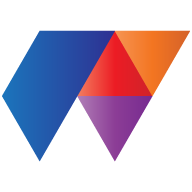Optimize Pages for Search Engine Optimization (SEO)
For pages to rank during searches in search engines like Google and Bing, they need to be set up suitably for Search Engine Optimization (SEO). SEO has two broad areas- On-Page Optimization
- Off-Page Optimization
For the basic essentials, each page should have a clear definition of the keywords that they represent. 1 or 2 keywords for each page is good, more than this dilutes the effectiveness of the individual keywords.
Each page must have the following information clearly for search engines:
- Meta Title - The title of the page, that needs to be displayed by the browser when the page is opened; and that is displayed on search engine results as titles or headings to be clicked on. Rules - Length should be 50 to 60 Characters, Primary keyword should come first , Avoid stop words, and don't use one word repeatedly.
- Meta Description - Meta description is a summary of your page content; It is text you add within the HTML code of the page, that may be returned in search engine results. Rules - The length of this should be between 150 and 160 characters, the primary keyword of the Page’s description has to be used in the description; in addition, you can also use a secondary keyword.Â
- Canonical (Page URL) - Specify the full URL that you want people to see on search results for your page; It also helps avoid pages with similar (duplicate) content or similar url, that search engines may pick up instead of your actual page.
- Alt Text for Images - 'alt text' or 'alt' attribute value (for image tag) is the written name or title that appears in place of an image on a webpage if the image fails to load on a user's screen.This gives an idea about what the image is and also allows search engines to better crawl and rank your website. Only use text here, and keep it short.
When you create a page PageWyze sets up the URL, Meta Title and Meta Description exactly as you need for your SEO. The h1 tag for the page title, text for the page and the alt text for images can be setup within the code and content for the page.
These essentials for the page form the base for search engines listing the page in their searches for the keywords that you have aligned the pages with. Their rankings can be then improved using Off-Page Optimization methods.
 PageWyze
PageWyze